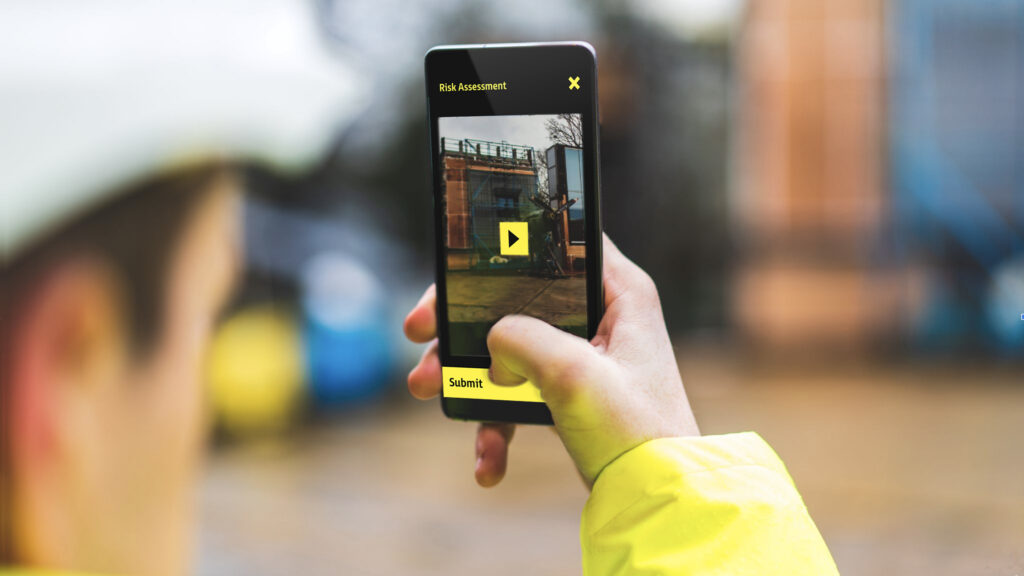AI transforming water industry: where are you on your digitisation journey? – part one
By Shelley Copsey, CEO at FYLD
In my last article, I focused on how FYLD is transforming the water industry with AI. I detailed three simple ways FYLD’s AI is being deployed simply and quickly by water utilities and their supply chains, to modernise operations and deliver better network outcomes.
In the next of this four part series, I explore the first stage of digitisation companies engage with, and how the FYLD team works with water utilities to digitise their journeys…
Customers at stage one – digital paper has been deployed
A significant proportion of the water industry remains stuck at stage one of digitisation. Communication tools such as digital forms (or digital paper, as FYLD calls it), asset picture capture apps and WhatsApp are widely used across organisations.
As smart phones became widespread, and field workers naturally began to use them to make their working days easier and more productive, organisations had little choice but to enable this first step of digitisation.

We often see customers who are at this stage of their digitisation journey using a multitude of point of work solutions. This can often be multiple products which work towards the same goal, such as multiple versions of digital forms. This approach results in:
- A lack of longitudinal job data, with information about each job spread across a plethora of systems and not integrated into core platforms such as ERPs and CRMs;
- Workforce inefficiency, with workers jumping in and out of apps, not readily able to identify what app they should use for which purpose. They are fatigued with the frequency with which ‘just one more app’ is added to their days; and
- A reinforcement of siloed teams, right at the time the industry needs worker flexibility due to chronic labour shortages – with every team using different apps and processes, workforce agility is tough.
Whilst at first glance, it seems positive that an organisation has taken a step forward on the digitisation path, this first stage will not generally provide a water utility with the ability to deploy AI solutions.
This is because the data sets that they are generating are disparate, frequently untracked and not linked to asset, team or customer data. While there are AI techniques that could join up these data sets for a water utility, they are complex and unlikely to be implemented where an organisation has not moved past this stage at digitisation.
Customers at this stage will often talk to FYLD about the reasons they are ‘stuck’ here. The organisations we see break through to the next stage of digitisation either have the following characteristics, or are willing to make the few small changes to let them realise their organisational digitisation ambitions:
- They know the first step needs to be both simple and meaningful. They know we are not in an era where digital = difficult, and they are looking for products that they can run rapid Proof of Value trials for, enabling a fast Time to Value for them;
- They are able to identify early adopter teams – and realise that they need to be careful which of their teams experiment with new technologies and whose feedback to prioritise. While they may wish to involve a broad group of field workers in a pilot project, they know that being swayed by the views of late adopters will not drive successful steps forward on their digitisation journey; and
- They prioritise the experience of the field worker. Gone are the days of designing products for remote management or office teams, and pushing them out to field workers without care for their experience. Instead, successful organisations understand the needs of the field workforce to operate at highly efficient rates while staying extremely safe in dangerous working conditions. These organisations are choosing products to experiment with carefully based on the user experience that can be delivered.

So you may ask why are organisations at this stage of digitisation deploying FYLD Proof of Value projects?
The FYLD solution is built on the types of technology we all use in our everyday lives – things like taking short videos or photos, and WhatsApp style messaging. Workers of all ages are using these types of products everyday.
Language (including accents, regional dialects, and ability to read/write) is no longer a barrier to effective communication. Also, FYLD’s platform already operates seamlessly between English and Spanish speaking crews, and will shortly be available in even more languages.
While the FYLD solution is powered by AI and has some great algorithms sitting behind it, it is super simple for field workers to use given how it is built. Driven by AI, it provides prompts to remote managers on where they should focus their attention, coupled with rich video led remote site visibility.
FYLD customers are achieving 8-12% productivity uplifts in as little as 6 weeks, with substantial safety and environmental outcome improvements in parallel. This new way of working is so intuitive that we have not seen a single customer need to run a complex ‘transformation’ project around their FYLD deployment, just some short and simple classroom or online training.
In short – for water utilities who are beginning to realise the power that AI could bring to their operational processes, FYLD provides the opportunity to rapidly leapfrog from stage one digitisation to the next stage, with minimal investment.
Stay tuned for the next in this series. In the meantime, you can read more about FYLD’s commitment to transforming the water sector here.















